Pepsi Pre-Cool System Expected to Cut Energy Use 26%
by: Environmental Leader, 2012-06-25 14:37:48 UTC

PepsiCo has begun testing a Cool-n-Save pre-cool system for air conditioning at its bottling facility in Tulsa, Okla. Greenway Design Group says it expects its pre-cooling system to reduce the bottling facility’s energy use from air conditioning as much as 30 percent, with an average savings of about 26 percent during peak heat seasons. PepsiCo [...]
 B9 Shipping developing 100 percent fossil fuel-free cargo sailing ships
B9 Shipping developing 100 percent fossil fuel-free cargo sailing ships
by: Gizmag Emerging Technology Magazine, 2012-06-22 07:58:35 UTC

Ireland-based B9 Shipping has started work on a full-scale demonstration vessel as part of its goal to design the modern world’s first 100 percent fossil fuel-free
cargo sailing ships. Unlike most conventional large cargo vessels, which are powered by bunker fuel, B9 Shipping’s cargo ship would employ a Dyna-rig sail propulsion system combined with an off-the-shelf Rolls-Royce engine powered by liquid biomethane derived from municipal waste... Continue Reading
B9 Shipping developing 100 percent fossil fuel-free cargo sailing shipsSection: On the WaterTags: Alternative Energy,
Biofuel,
Sail,
Shipping,
Wind Power Related Articles: 




 13-Year-Old Boy Becomes The Fastest Kid In The World At Human Powered Vehicle Championships!
13-Year-Old Boy Becomes The Fastest Kid In The World At Human Powered Vehicle Championships!
by: Inhabitat , 2012-06-22 21:53:47 UTC

A 13-year-old boy from the UK has become the fastest kid in the world by winning the Human Powered Vehicle World Championship’s Junior class. Tim Parker, who is from Stithians and attends Penair School in Truro, competed against kids from all over Europe at the Kent-based contest. Racing against youngsters as old as 16, Tim was able to reach speeds of 30 mph in a HPV powered solely by his own physical strength!




Read the rest of 13-Year-Old Boy Becomes The Fastest Kid In The World At Human Powered Vehicle Championships!
Permalink |
Add to
del.icio.us |
digg
Post tags: child genius, chris parker, fastest boy in the world, HPV World Championship, ice trikes, ice trikes chris parker, recumbent trikes, tim parker
Clariant's eco advanced denim manufacturing process
by: Ecofriend, 2012-06-20 19:33:03 UTC
Surbhi Sharma:
Denims are one of the most favorite wears through all age groups, across the world. A conventional denim production involves more than fifteen dyeing vats and a wide range of chemicals. This entire process takes about 2500 gallons of water per pair along with large amounts of energy, considering that it has billion fans across the globe.

Eco Friendly Denim Process
A Swiss chemical company – Clariant has created a process that can help reduce ninety two percent of water along with close to about eighty seven percent of reduced cotton waste. This will also help in saving about thirty percent of energy. The process unlike the traditional dyeing mechanism involves only one vat dyeing process. With factors like sustainability being the key focus, it virtually produces no waste water as it uses the so called ‘advanced denim process’ – the denim Ox water consumption significantly reduces the water ingestion. The sizing or pad Ox process does not involve any water usage for rinsing. Since the production of denim involves large quantities of water, issues like cleansing and disposing of the waste water poses a great challenge and is not appreciated by all the ecologists.

Eco Friendly Denim Process
Clariant is also in the process of launching a denim book to help its users understand the complete process of manufacturing denim via this advanced denim process. They are also trying to partner with various leading manufacturers to help them benefit from this less power and low power input process, thereby helping them reduce the industry’s considerable amount of water and carbon footprint. This Eco-friendly advanced process uses Eco-conscious concentrated single sugar based reducing agent along with liquid sulfur dyes. This is an efficient and easy to control process and does not require any major changes in the existing production lines. This process also allows enhanced and effective reproducibility of colors and tones of the fabric.
Via: gizmag


 Water Bottle Keeps Cool by "Sweating"
Water Bottle Keeps Cool by "Sweating"
by: TreeHugger Design, 2012-06-23 09:00:00 UTC

A clever water bottle uses condensation to keep its contents cool.
EnerPlex could be slimmest solar case for iPhone yet
by: Gizmag Emerging Technology Magazine, 2012-06-21 06:40:33 UTC

In comparison to some of the bulkier solar panel-packing iPhone cases we’ve seen, such as the
AQUA TEK S and
Solar Surge, the EnerPlex charger is positively Kate Moss-like. Made by Colorado-based Ascent Solar using its ultra light, thin and flexible solar panels, the EnerPlex for iPhone 4/4S adds just 72 g (2.53 oz) to the weight of the phone while providing the ability to top up the battery from the sun’s rays... Continue Reading
EnerPlex could be slimmest solar case for iPhone yet Section: Mobile TechnologyTags: Charger,
iPhone 4,
iPhone 4S,
Photovoltaic,
Solar Related Articles: 




 Sofia Design Week 2012: Student Work In Context, from the University of Forestry and National Academy of Art
Sofia Design Week 2012: Student Work In Context, from the University of Forestry and National Academy of Art
by: Core77, 2012-06-21 15:00:00 UTC
 Reporting by Temenouzhka Zaharieva. Above, Waste Chair for In Context - Eco Design Workshop
Reporting by Temenouzhka Zaharieva. Above, Waste Chair for In Context - Eco Design Workshop
Part of the numerous events during Sofia Design Week 2012, the student workshop In Context - Eco Design was organized together with the University of Forestry in Sofia and lead by the unique Austrian industrial and product designer Thomas Feichtner, winner of numerous design prizes and most recently named, "Austrian Designer of the Year" 2011.
The task at hand was to design furniture and products made from sustainable materials. The winning design was a team of three students—Denitsa Ilieva, Stoyan Voynishki and Mariela Koleva—who, with their vision for a chair/waste bin really surprised the jury. The product is a high chair that is essentially hollow. The base collects discarded materials and the upper part of the chair, the seat, acts as a press. When one sits on the chair, it pushes the waste down and reduces its volume. The concept of this product provides complete freedom in choosing the materials for its production as well as for separate collection of waste.
Another interesting design was the chair "Reply" made of plywood with individual components assembled without the use of auxiliary materials. The chair was designed by a student duo, Tzvetan Stoykov and Sonia Ivanova. The chair is stylish and comfortable, suitable both for home and for commercial spaces.

(more...)


 IDSANYC "The Tangible: Dead or Alive" Recap
IDSANYC "The Tangible: Dead or Alive" Recap
by: Core77, 2012-06-22 14:00:00 UTC

Tuesday night saw the IDSANYC's second annual panel discussion on "The Tangible: Dead or Alive" at Fahrenheit 212. Our own Executive Editor LinYee Yuan moderated the discussion between Tom Igoe of ITP, Dan Formosa of Smart Design, and the inimitable Karim Rashid. Per the rather blunt suggestion of the title, the four design experts explored the dichotomy between the physical and the digital, variously reframed as the material vs. the virtual or (implicitly) as the real and the ideal. Of course, we've come a long way from Plato's distinction, and the broad trend towards the dematerialization of human experience has grown far more complicated than a dualism in the classical sense: as the world becomes digital in new and unexpected ways—and vice versa—we have less distance to step back and reflect. Hence, "The Tangible: Dead or Alive."
 From L to R: Tom Igoe, Dan Formosa, Karim Rashid, LinYee Yuan
From L to R: Tom Igoe, Dan Formosa, Karim Rashid, LinYee Yuan
The outspoken Karim Rashid was, as ever, a font of pithy futurism, espousing his opinion that there is no good reason that all physical objects are not beautiful (manufacturing constraints being the bad reason) and dreams of a more seamless—read: immaterial—future, in so many words. For him, it's less a question of tangible and more about experience itself: Rashid fully embraces the dematerialized, digital world as the next stage of the human condition, and his approach to product design might be construed as an attempt to reduce or, if possible, eliminate the resistance of the physical world ("seamless," as he put it).
To that point, he started the conversation with an example of a hotel he recently designed, where an RFID-enabled key will open doors, operate elevators, etc., for guests, who literally do not have to lift a finger (footnote: "Things Karim Just Designed" ought to be a meme...). Igoe's counterexample was that a proximity-based system might open adjacent doors when one is walking by: that the system must understand our intentions in order to be completely seamless.
For the ITP Professor, the best design and technology has an element of "humanness"; insofar as "we're wired... to interact," technology is a reflection of how we negotiate the world around us. Igoe asserted that "there is a value, a pleasure to physicality," and the goal, for designers, should be to find a balance between the virtual and the physical.
"The more you dematerialize [the world], the more you elevate experience."
-Karim Rashid
While Formosa tended to agree, Rashid maintained his contrapuntal opinion that "the material world is an obstacle," citing Marshall McLuhan's "bubble man" in expounding his own objective for design: to excise the banal. His definition of "living a luxurious life" is based on "getting rid of the banal... the dull stuff," and going digital is invariably a step forward. Similarly, he dreams of the day—within years, not decades—that he can sketch in three dimensions by tracing a form in the air. Per his aesthetic, he rejects the modernist trappings of industrial design, which he sees as designing in a box: the rectangular kitchen demands rectilinear countertops, which in turn necessitate appliances that fit in a square footprint. "When we design in 2D, we shape the 3D world. When we design in 3D, we'll shape the 4D world."
(more...)


 Tesla Model S Verified as Longest-Range Electric Vehicle, at 265 Miles
Tesla Model S Verified as Longest-Range Electric Vehicle, at 265 Miles
by: Environmental Leader, 2012-06-22 13:57:40 UTC

Tesla Motors’ Model S has received a rated range of 265 miles and a combined efficiency of 89 miles-per-gallon equivalent from the EPA, establishing the luxury sports sedan as the electric vehicle with the longest battery range on the market. Tesla Motors will today begin delivering its first Model S sedans, which start at $49,900 after applying the [...]
 Movie: tour of Design Products at Show RCA 2012 with Tord Boontje
Movie: tour of Design Products at Show RCA 2012 with Tord Boontje
by: Dezeen, 2012-06-22 10:55:07 UTC
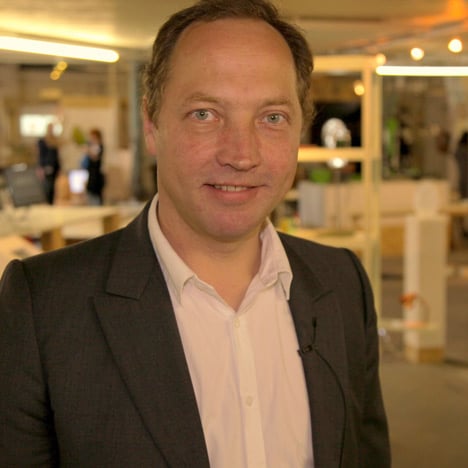
Movie: in the first of four movies filmed by Dezeen at the Royal College of Art graduate exhibition in London, leader of the Design Products course Tord Boontje talks about selected projects including food containers made of radioactive soil and suits for living in someone else’s skin. (more…)



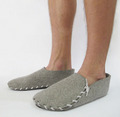

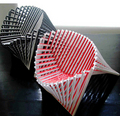
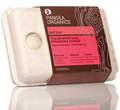


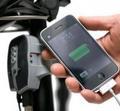

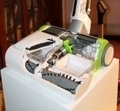
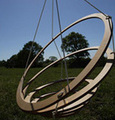
Comments by our Users
Be the first to write a comment for this item.